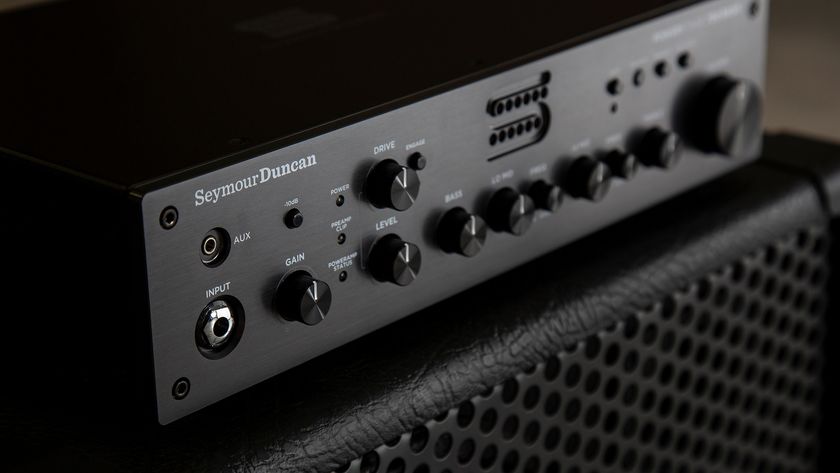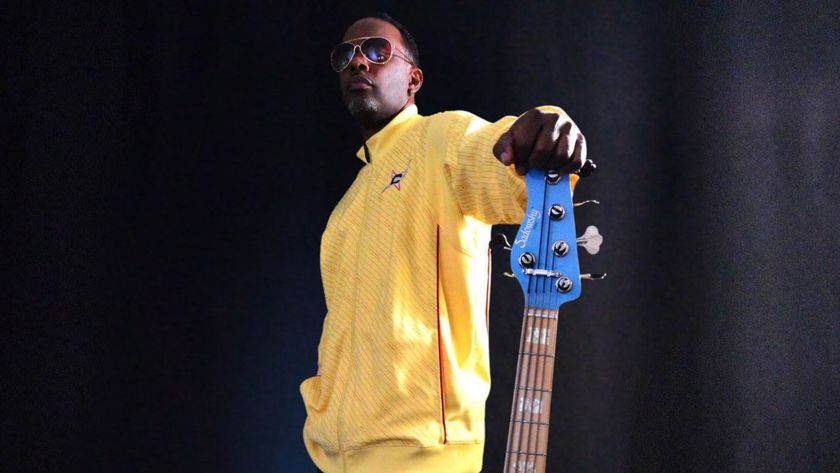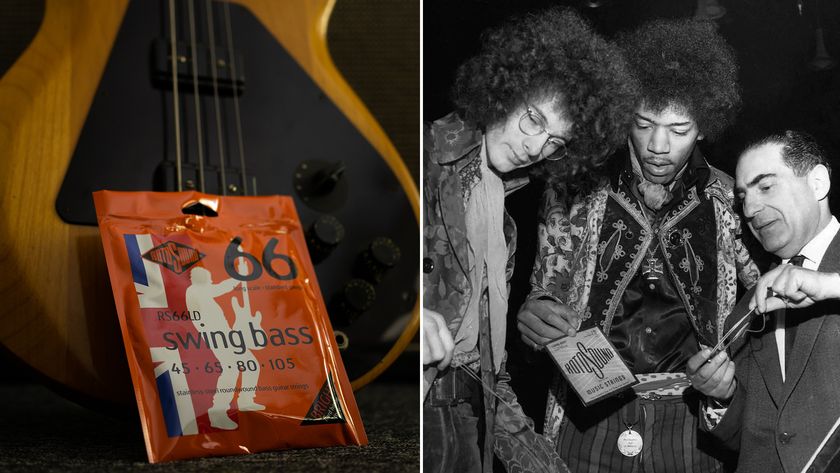Electro-Harmonix Nano Pedals
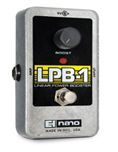
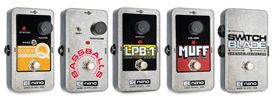
The sound of Electro-Harmonix pedals has resounded through rock music for four decades. Almost every guitarist can name one that he (or she) loves. But many also lament that their favorite EH pedal is too big to fit on their pedal board, or that they're wary of taking it on the road because the casing seems, well, un-roadworthy. And the fact that these units require a different power supply than any other piece of guitar gear has always been a definite turnoff. Well, brothers and sisters, you can now rejoice. The new Nano series of pedals from Electro- Harmonix puts to bed all the aforementioned caveats, packaging the distinctive sounds that we've come to adore in solid, molded metal casings with standard adapter inputs, small enough to fit easily on the most crowded pedal board.
Nano Dr. Q
For funky filtering, it's hard to go wrong with the Q. Its sensitivity is preset but it responds equally well to single-coil and humbucking pickups. The Range control lets you go from low-end burps to high-pitched squawks, while the Bass switch kicks in a healthy dose of extra booty-to the extent that you'll need to back off your guitar volume to keep from overloading your amp. Once you do, however, you'll find that the additional bottom is a useful option. Whether your thing is Jerry Garcia (or New Bohemian)-style leads, funk rhythm, or electronica effects, the Dr. Q would be a welcome addition to your audio arsenal.
Nano Bassballs
Originally designed for bassists, the first Bassballs pedal found numerous fans among guitarists seeking a very vocal envelope filter pedal. With a Q that almost approaches a talk-box level of vowel reproduction, the Bassballs "speaks" for itself. Add a distortion switch that brings out further levels of harmonic overtones, plus a range of oscillation that approaches insane, and you have the recipe for a classic EH effect. Except for two subtle changes-the Sensitivity knob has been relabeled Response, and a mini-toggle engages the distortion instead of a slider switch-the Nano version exactly replicates the original. This unit gives new meaning to the concept of "making your guitar talk."
LPB-1
"An exact recreation of the original LPB-1 circuit, which ushered in the age of overdrive in 1968," says the EH website. A major claim, but not far from the truth. Back when guitarists started using higher-wattage amps to reach bigger crowds, but before there were hotter pickups to overdrive them or pedals to emulate that overdriven sound, the original LPB-1 (Linear Power Booster) allowed rockers to drive the front end of a Twin Reverb into distortion, even with single-coil pickups. The new version recreates the massive range of boost available in the original. It also revives that pedal's distinctive tone-not totally transparent but extremely warm and musical. There are many other clean boosts out there, but only one sounds like this.
Muff Overdrive
The EH Big Muff Fuzz is an archetype among fuzzes, the Little Big Muff and Muff Fuzz variations on the theme. The Muff Overdrive courts confusion by being neither a fuzz nor, to these ears, the standard definition of an overdrive, yet it offers elements of both. Like a good overdrive pedal, the Muff Overdrive cleans up nicely when you back the volume of your guitar down. That said, lots of other pedals give you a more natural-sounding overdrive than this one when you crank it up. Still, with a little experimentation, you'll discover what this pedal does well: adding some of that Muff Fuzz sound to an already overdriven amp. Setting a Fender Princeton to overdrive when my guitar volume was up, I could then kick in the Muff Fuzz for further distortion (à la the LPB-1) and some fuzz-like coloration. Backing off the guitar volume cleaned everything up - a limited but very cool effect.
Switchblade
This pedal revives one of the first external switching devices available to guitarists. Want to take advantages of the different channel inputs available in classic Twin Reverbs and Marshalls? Just run your axe into a Switchblade and avail yourself of route "A" (sent to one amp input) or "B" (sent to the other). Need to switch guitars quickly and quietly? Plug one instrument into "A" and the other into "B," then come out of the single Switchblade jack to the amp. You can change speaker cabinets, route pedals, or perform a multitude of other sonic manipulations with this simple pedal. Think for a minute and you'll find a use for it.
Get The Pick Newsletter
All the latest guitar news, interviews, lessons, reviews, deals and more, direct to your inbox!

“If your taste in fuzz leans toward the extreme, Gary has the personality to remain your lifelong best friend”: EarthQuaker Devices Gary review
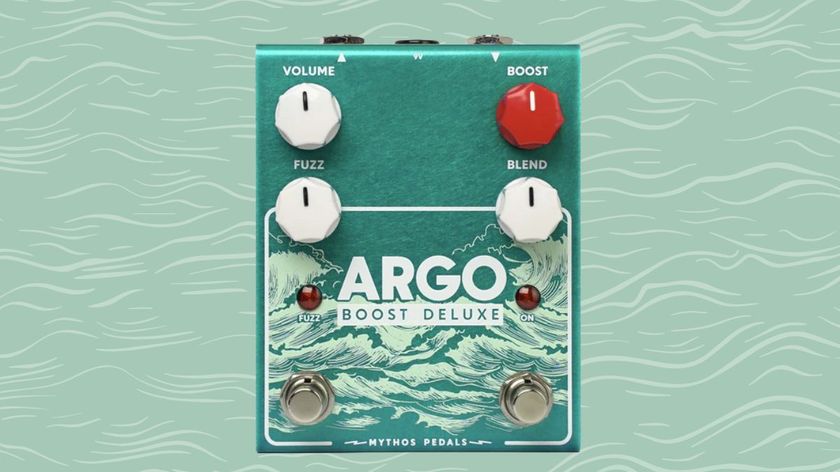
“All of a sudden, my occasional-use pedal has gone to something that can live on the ’board”: That Pedal Show’s Mick Taylor sparks inspired change that sees the Argo Boost Deluxe serve octave fuzz and boost tones in one unit

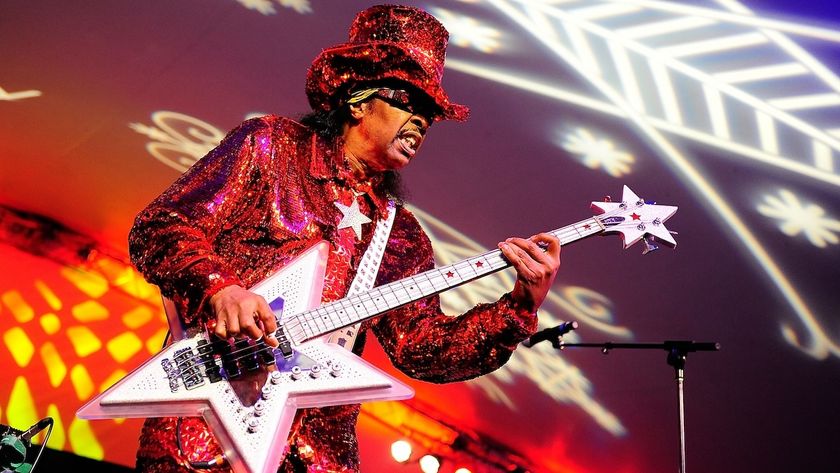


![[L-R] George Harrison, Aashish Khan and John Barham collaborate in the studio](https://cdn.mos.cms.futurecdn.net/VANJajEM56nLiJATg4P5Po-840-80.jpg)
